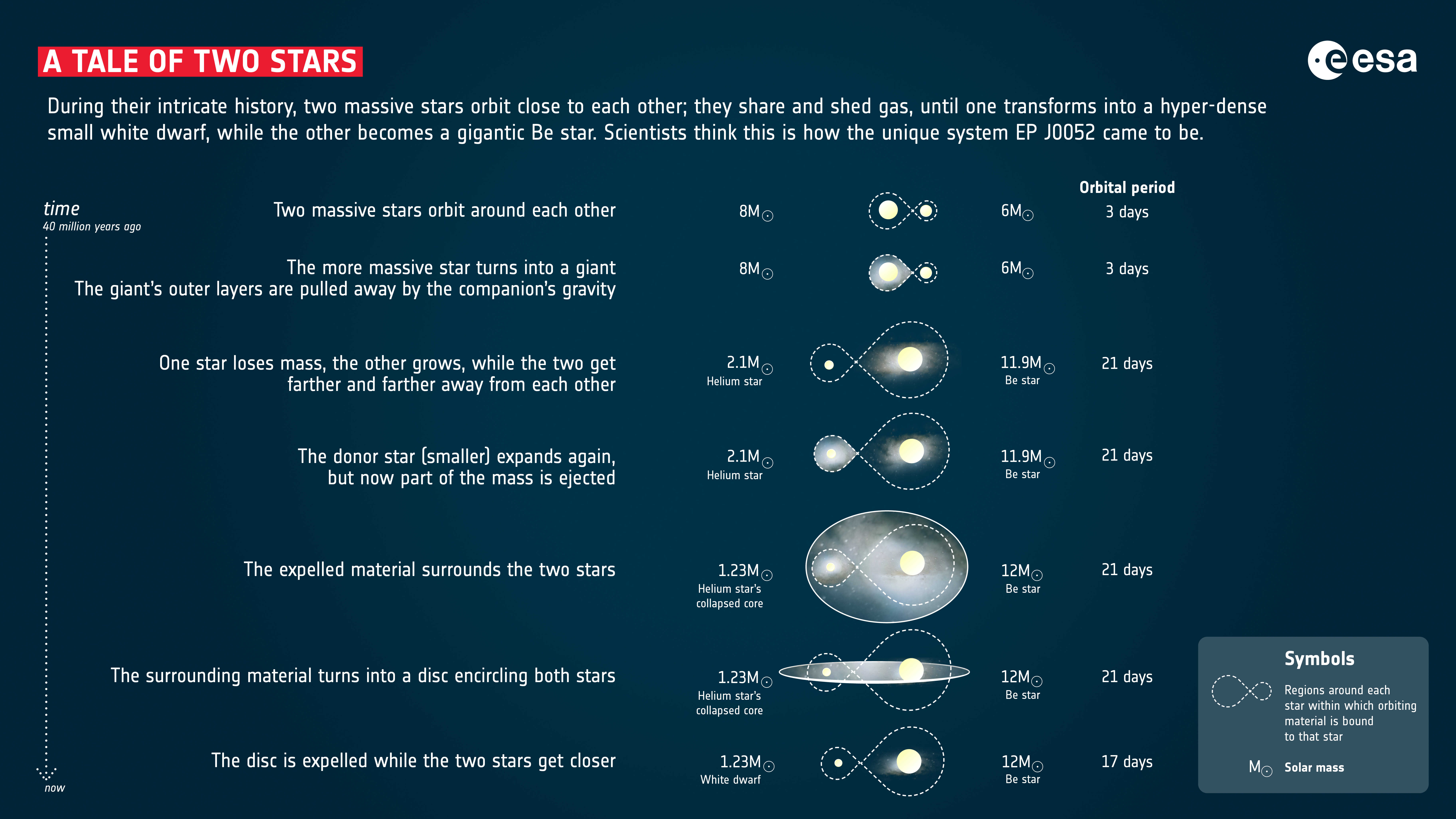Einstein Probe catches X-ray odd couple
The Einstein Probe (EP) satellite has successfully detected an X-ray flash originating from a rare binary system. This observation significantly enhances our understanding of massive star interactions and evolutionary processes, showcasing the mission's exceptional capability to identify transient X-ray sources in the cosmos.
The binary system in question comprises a massive Be star exceeding 10 times solar masses and a compact white dwarf with a mass comparable to the Sun. Only a limited number of such systems have been documented, and this detection represents the first time that scientists have monitored the X-ray emissions from this type of stellar pair, observing its rapid flare and subsequent decay.
On May 27, 2024, the Wide-field X-ray Telescope (WXT) aboard EP registered X-ray emissions from the Small Magellanic Cloud (SMC). To ascertain the source of this newly identified X-ray source, designated EP J0052, follow-up observations were initiated using the Follow-up X-ray Telescope (FXT) on EP.
The initial detections prompted coordinated observations by NASA’s Swift and NICER X-ray telescopes, while ESA’s XMM-Newton mission conducted follow-up observations 18 days after the detection, aiming to further characterize the source's properties and dynamics.
“We were chasing fleeting sources when we came across this new spot of X-ray light in the SMC. We realized that we were looking at something unusual that only EP could catch,” says Alessio Marino, a postdoctoral researcher at the Institute of Space Sciences (ICE-CSIC), Spain, and lead author of the new study published on January 18th.
“This is because, among current telescopes monitoring the X-ray sky, WXT is the only one that can see lower energy X-rays with sufficient sensitivity to catch the novel source.” Lead author Alessio Marino added.
Analysis indicated that the binary consists of a rapidly rotating Be star and a white dwarf. The gravitational influence of the white dwarf extracts material from the Be star, triggering a nuclear explosion that radiates a significant flash across diverse wavelengths. The short-lived nature of the flare, along with the detection of elements such as neon and oxygen, suggests the presence of a heavy white dwarf approaching the Chandrasekhar limit.
“This study gives us new insights into a rarely observed phase of stellar evolution, which is the result of a complex exchange of material that must have happened among the two stars,” Ashley Chrimes, an X-ray astronomer at ESA, noted, “It’s fascinating to see how an interacting pair of massive stars can produce such an intriguing outcome.”
“Outbursts from a Be-white dwarf duo have been extraordinarily hard to catch, as they are best observed with low energy X-rays. The advent of EP offers the unique chance to spot these fleeting sources and test our understanding of how massive stars evolve,” remarks Erik Kuulkers, ESA Project Scientist for EP.
“This discovery showcases the game-changing capabilities of this mission.” Erik Kuulkers added.
EP is an international collaborative mission, and its science team comprises about 300 researchers worldwide. The recent publication of the first paper led by scientists from the European Space Agency (ESA) member states based on EP data highlights the project's openness and collaborative spirit in scientific research. We hope the EP satellite will continue to provide rich observational data for the international research community, thereby driving advancements in high-energy time-domain astronomy, said EP’s Principal Investigator, Prof. Weimin Yuan.
ESA has provided a more detailed report on this discovery, which can be found at the following link:
https://www.esa.int/Science_Exploration/Space_Science/Einstein_Probe_catches_X-ray_odd_couple

Image title: Scientists think this how binary system EP J0052 came to be. (Credit: ESA; Licence: CC BY-SA 3.0 IGO)